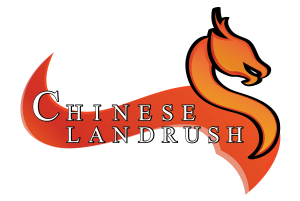In previous blog posts, we’ve explained the many reasons why Chinese IDNs are good for brands and businesses, investors, brand protection agencies, and regular netizens, as well as the incredible opportunities they present. The reasons are sound and reliable, but we’ve yet to go over the specifics of how to “spin” great Chinese IDNs as an investor, and how to properly value them for your investment strategies.
What does it mean to “spin” domain names? For those of you who may be new to domain investing, in short, spinning a domain name is the process of finding an available name based on criteria such as character length, syntax, the number of syllables, and more.
So, with that said, we present our next educational resource to help you, the domain investor, spin great names and get the maximum return on your investments within the Chinese domain market. Firstly, note that certain unique qualities of the Chinese language makes the creation of investment-grade Chinese domains challenging to non-Chinese.
The general principles of spinning Chinese domain names is similar to the way people been spinning English domain names. After all, they are all domain names, of the same nature (unique identification), for the same purpose (for users to locate and visit websites), and that much is universal in every country and culture. Good Chinese domain names, like English counterparts, should posses the following qualities:
- Be an appropriate length by Chinese standards and not be overly short simply to be short;
- Be easy to memorize;
- Be phrased to fit people’s normal speech patterns so it doesn’t sound odd, broken, or weird;
- Applies contemporary Chinese syntax, such as for repetition (Chinese is an extremely flexible language with particularly low tolerance for repetition. Even the repetition of pronouns in a sentence, such as “I lost my wallet”, can be considered odd);
- Suits the target audience (does that audience have a preferred text input method for Chinese?)
- Truly reflects the function and service of the website;
- Is widely applicable, so that a large number of people will want it, providing a considerable demand, which ultimately leads to better price
The most important first lesson for spinning good Chinese domains is to unlearn English-domaining rules of short strings.
The English language has a relatively low information density compared to hyper-compact languages such as Chinese. To express the same idea, an English speaker needs to use more characters (letters) and hence must type a longer domain name.
It is this exceptionally high information density that makes spinning good Chinese domains (especially investment grade domains) quite different than for equally good English domains.
In fact, to learn how to spin excellent Chinese domains, it is important to forget much of what you already know about spinning English domains. Many of the rules of English domains do not apply to Chinese, and some (such as “be as short as possible”) can harm your prospects.
For the Chinese language, thanks not only to high information density, but also due to certain cultural cues, methods of abbreviating, and making puns, a lot can be said within a space of a small number of characters.
Additionally, great Chinese should not only include “keywords” or “keyphrases,” but also have established legitimate, logical connections between words, all expressed in a way that fits into typical Chinese speech patterns semantically and syntactically.
Consider the following examples in spinning a domain name for a food court located within a shopping center called the “Oriental Plaza”. First, let’s look at a domain name which has been constructed according to English-domaining rules of “shorter is better”:
东方饭 (东方 = oriental / 饭 = food)
While this domain fulfils English-domaining rules of short terms, in Chinese, it is not a good or valuable domain name.
The domain is not a good choice because:
- There is no natural connection between the terms “oriental” and “food”;
- “Food” is dictionary correct, but it not expressed in a way that normal people speak or use the Chinese language. When phrased as “饭”, the word is usually used to modify other nouns, such as 饭店 (restaurants), 饭桌 (dining table), 饭碗 (rice bowl), 饭后 (after-meal). Standing on its own, it can also be ambiguous and refer to “cooked rice.”
The domain is not valuable because:
- The domain is semantically ambiguous and syntactically broken, and such examples of unnatural Chinese are subconsciously embarrassing to most Chinese, therefore most Chinese will not remember this phrase.
- You see that a dictionary-correct domain, made according to western recommendations of “shorter is better” fails in the Chinese domaining context.
In this exercise, a longer domain is much better and more valuable:
东方广场美食城 (the court of fine cuisine located within Oriental Plaza)
This is a great domain name, because:
- Overall it’s only 7 characters long, which is not long by Chinese standards – and compare 7 Chinese characters versus the equivalent 50 English letters!
- The string contains all the information and context in the same package.
- It’s phrased exactly as how real Chinese people will name such a place, thus it is easy to remember.
We’re going to pause here for now and let you absorb some of the introductory information on how to spin great Chinese domains. In our next installment, part two, we’ll go over some more pointers to help you come up with some fantastic Chinese domains. Some of those pointers include the compactness of the Chinese language and how that is important to understand in domain spinning, variations of Chinese characters, pinyin inputs, and finding a Chinese expert to help you in your business.
Stay tuned for next week’s part two!
-ChopChop Domains Team
*This is a courtesy republishing of the original article posted to ChopChop.news
